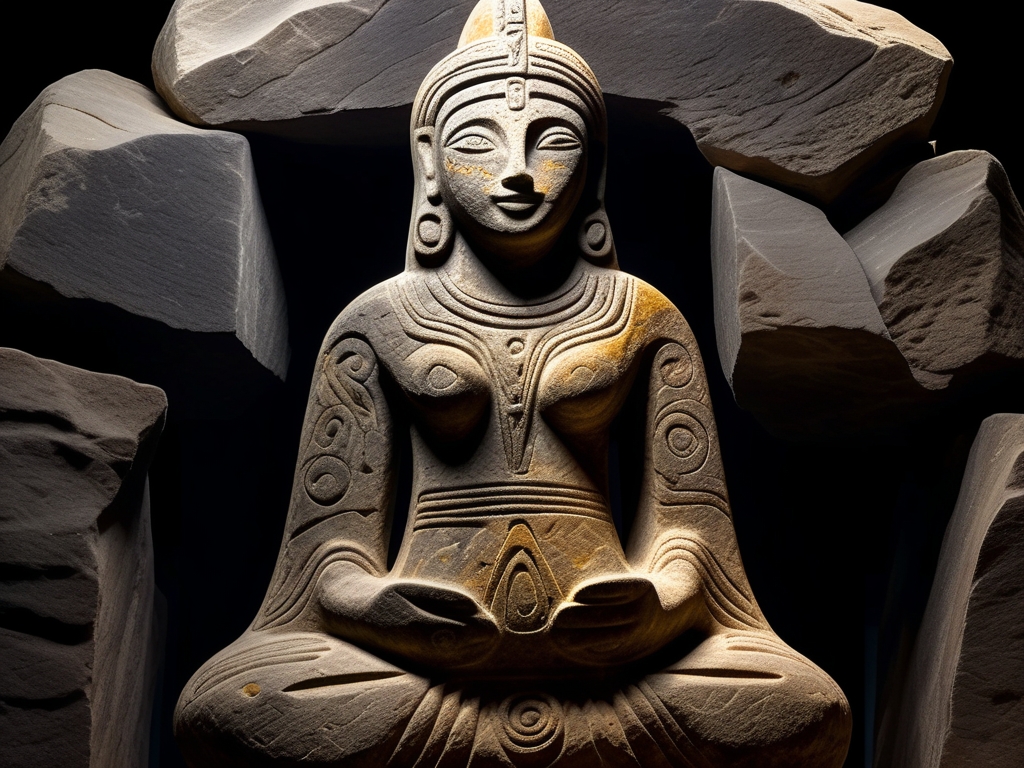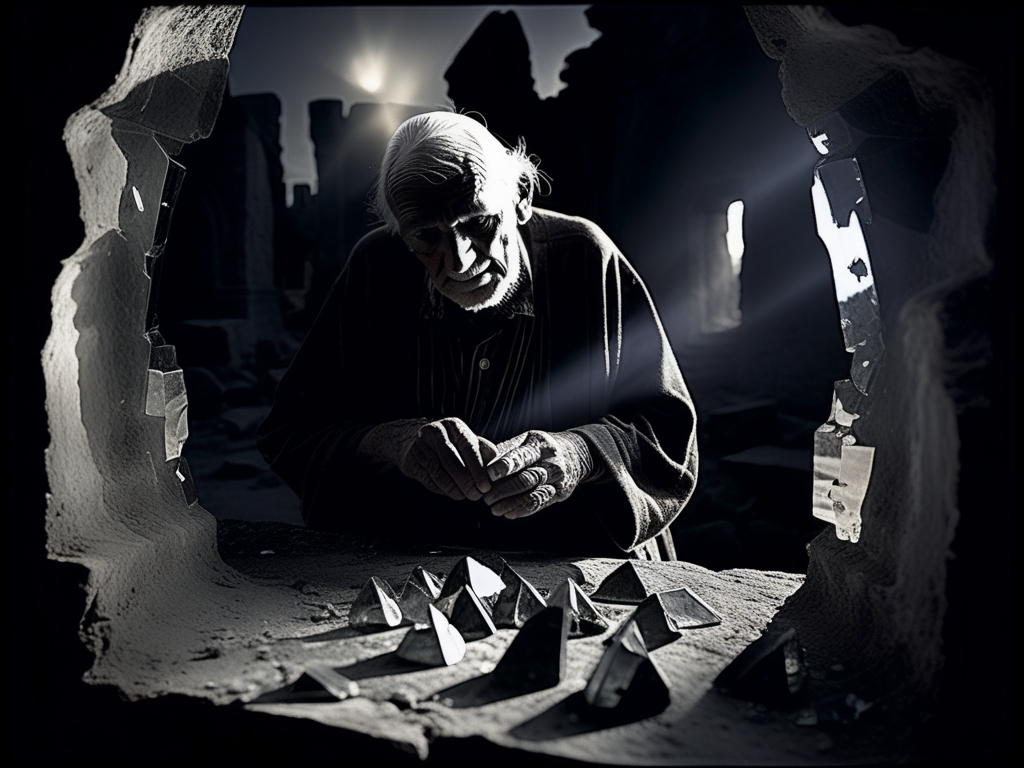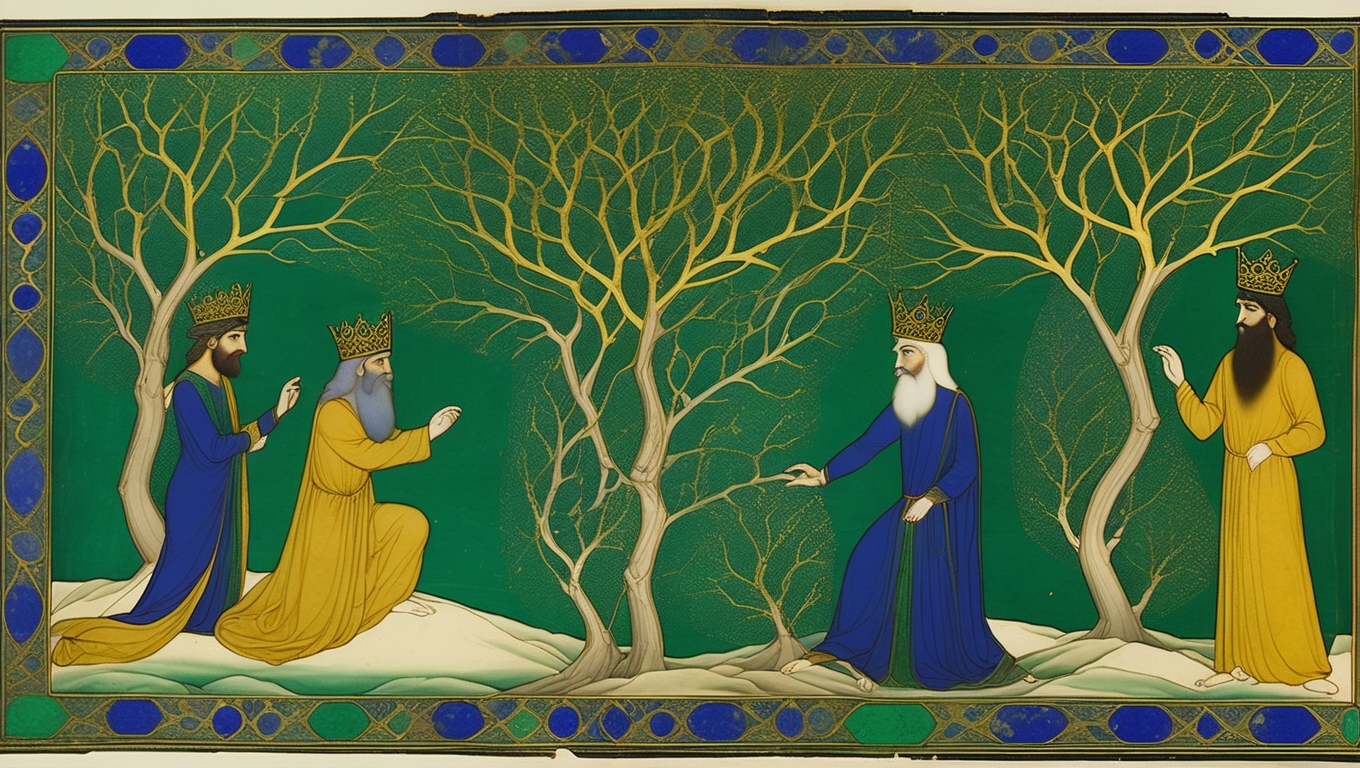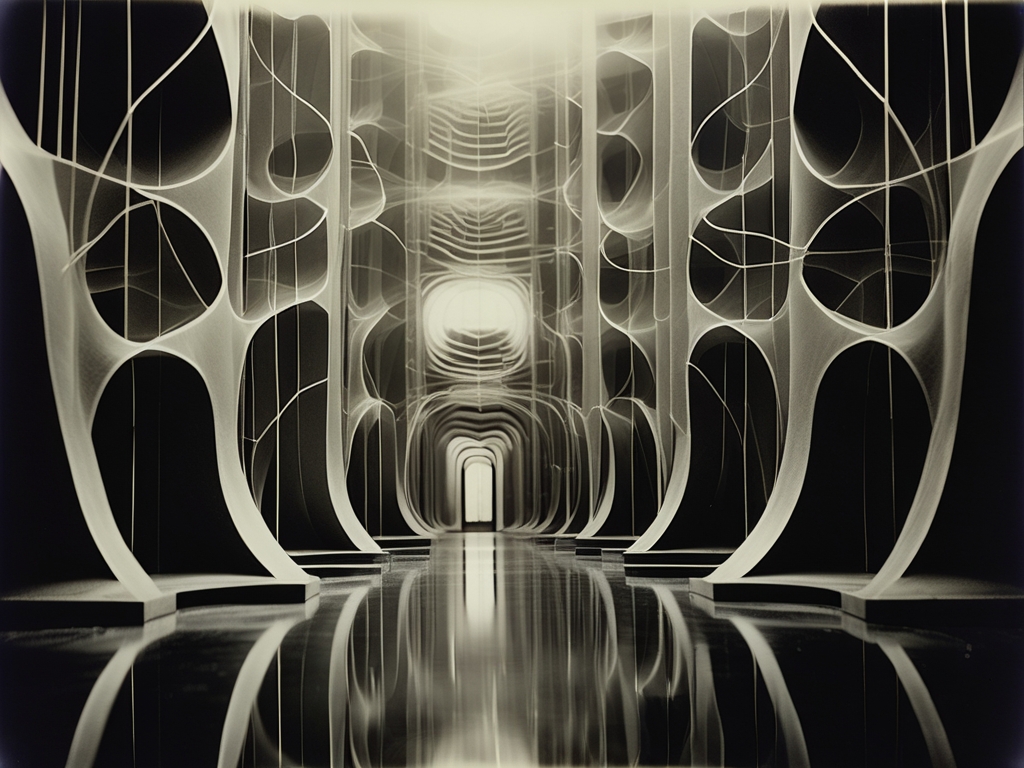Canine Conundrum
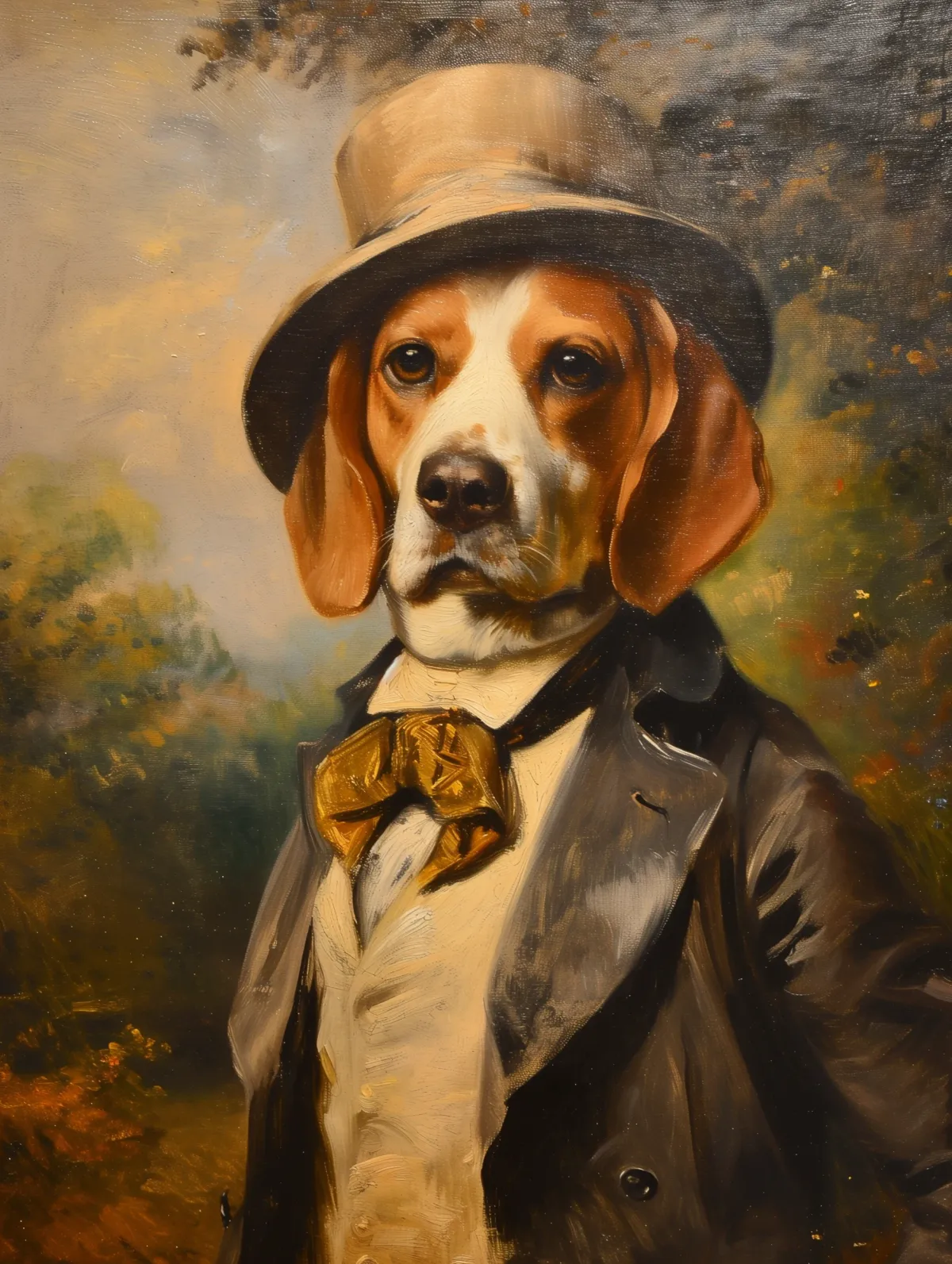
Elvira Marlowe, an eccentric artist of the late 19th century, is behind this peculiar yet captivating portrait titled “The Victorian Beagle.” Known for her blend of realism and fantastical elements, Marlowe had a penchant for imbuing her works with an air of the uncanny. This piece is no exception. Depicting a beagle dressed in Victorian attire, complete with a top hat and cravat, it challenges our perceptions of identity and societal roles. Often described as unsettlingly lifelike, the painting evokes mixed feelings of amusement and unease.
The legend surrounding “The Victorian Beagle” begins with Reginald, a young boy from a small English village, who bore an inexplicable connection to his childhood pet, Benson—a beagle. Benson was no ordinary dog. Found as a pup near ancient druidic ruins, he carried an aura that both enchanted and bewildered. From the age of five, Reginald confided in Benson more than any human friend. They seemed to share thoughts wordlessly, their bond profound beyond comprehension.
One foggy evening, under a full moon’s silver glare, Reginald stumbled upon a weathered book in the attic. Titled “The Secrets of The Old Ones,” it detailed rituals that promised immortality through symbiotic bonds with animals. Curious and longing to preserve Benson forever, he performed the incantations described within its brittle pages. A spectral fog enveloped them both, merging their essences. Reginald awoke to find himself unchanged but sensed that Benson had become more than just a dog—he felt an extension of his own soul within the beagle.
As days turned into years, villagers noticed that while Benson aged as all creatures do, Reginald remained unnervingly youthful. Whispers of dark magics spread, old superstitions surfaced, and dread festered beneath their tranquil lives. The boy’s family kept his secret well-guarded until tragedy struck one stormy night. In an attempt to unravel the enigma binding him to Benson, Reginald revisited the ruins where they had first met. There, cloaked figures emerged from the darkness—descendants of druids sworn to protect ancient secrets at all costs.
“A child entangled in immortal shadows pays dearly,” murmured their leader before an unseen force claimed Reginald’s life. Grief-stricken and isolated in his immortality tethered to Benson’s passing years later, Elvira Marlowe found the haunting tale irresistible. She painted “The Victorian Beagle” not merely as art but as elegy—a testament to the interwoven fates of boy and dog.
“There is an enchantment here that defies time itself.”
- Armand Blackwood, art historian
Today, as viewers gaze upon “The Victorian Beagle,” they sense echoes of Reginald’s yearning and anguish etched within those eyes glinting with human intelligence hidden behind a canine façade. Many claim to feel something stirring within themselves—an ancient longing or perhaps just the chill reminder of sacrifices made for unnatural desires.
Undoubtedly enigmatic and evocative of darker times forgotten yet remembered through whispers and folklore, Marlowe’s masterful brushstrokes beckon us to explore hidden depths within ourselves. Thus “The Victorian Beagle” captivates today’s audiences with its immortal legacy—a perpetual cycle where legend bleeds into reality and art breathes life anew.

